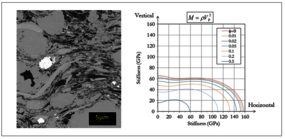A clay story: From structural studies to poroelasticity
This presentation will confront insights regarding the role of clay as a marker of geological deformation, and how its structure and fabric influence elastic and poroelastic properties used to discover, appraise, produce and/or store fluids in the subsurface. When present as a major constituent in high porosity sediment, naturally elongated clay particles respond to stress by reorienting themselves and record strain as they generate anisotropy for elastic, mechanical and transport properties. In advanced stages of compaction and diagenesis, clays are found to control aggregate anisotropy through abundance rather than overall preferred orientation. As the primary anisotropy carrier, and through their unique ability to incorporate water, clays also durably affect the static and dynamic elastic properties of reservoir rocks. In most recent efforts to better understand the poroelastic behavior of unconventional shales, clays are seen as a major cause for anomalous grain compressibility values, and hence Biot effective stress coefficient, with direct implications for reservoir flow and mechanical properties. Virtually all subsurface applications may be impacted, especially unconventional oil and gas production but also geothermal heat harvesting in hot sedimentary aquifers, or seal integrity in CO2 storage.
Laurent Louis, Aramco
17
décembre 2024
13h
14h
Salle du conseil

